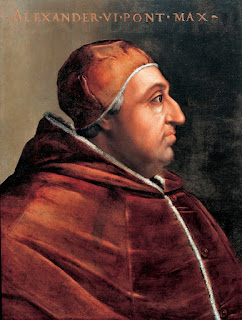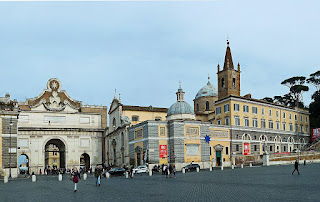Camillus de Lellis - saint
Reformed gambler who became devoted to caring for sick
Camillo de Lellis, a gambler and streetfighter who reformed his life and eventually set up a religious order to tend the wounds of soldiers on the battlefield, died on this day in 1614 in Rome. He was made Saint Camillus de Lellis by Pope Benedict XIV in 1746. Nowadays he is recognised as the patron saint of the sick, hospitals, nurses and physicians. Sometimes his assistance is also invoked by individuals with gambling problems. The Order of Clerks Regular, Ministers of the Infirm (M.I), better known as the Camillians, is seen as the original Red Cross on account of an incident during the Battle of Canizza in 1601, when a tent containing all of the Camillians’ equipment and supplies was destroyed in a fire. Among the ashes, the red cross from the back of a religious habit belonging to one of the Camillians was found to have survived. It became known as the Red Cross of Camillus. The Order’s activities eventually extended to caring for the sick generally, particularly during outbreaks of Bubonic plague. They established a presence in hospitals in Naples and Milan and in time the Camillians ran hospitals of their own. Read more…
____________________________________
Natalia Ginzburg - writer and politician
Sicilian raised in Turin became one of Italy’s great postwar novelists
The writer and politician Natalia Ginzburg was born on this day in 1916 in the Sicilian capital, Palermo. The author of 11 novels and short story collections, as well as numerous essays, Ginzburg came to be regarded as one of Italy’s great postwar writers, alongside Primo Levi, Carlo Levi, Alberto Moravia, Cesare Pavese, Elsa Morante and Giorgio Bassani among others. Her most famous works include Tutti i nostri ieri - All Our Yesterdays - published in 1952, Lessico famigliare - Family Sayings - published in 1963, and La famiglia Manzoni - The Manzoni Family - published in 1983. She was notable for writing about family relationships, politics during and after the Fascist years and World War II, and philosophy. Ginzburg, who was married to a prominent figure in the Italian resistance movement in World War Two, was an active anti-Fascist and a member of the Italian Communist Party in the 1930s. In later life, she was elected to the Chamber of Deputies as an independent. Although born in Palermo, Ginzburg spent her early life in Turin, where her father, Giuseppe Levi, was a professor of neuroanatomy at the University of Turin. Read more…
____________________________________
Palmiro Togliatti – politician
Communist leader gunned down near Italian parliament
The leader of the Italian Communist Party, Palmiro Togliatti, was shot three times on this day in 1948 near Palazzo Montecitorio in Rome. Togliatti was seriously wounded and for several days it was not certain that he would survive, causing a political crisis in Italy. Three months before the shooting, Togliatti had led the Communists in the first democratic election in Italy after the Second World War, which would elect the first Republican parliament. He lost to the Christian Democrats after a confrontational campaign in which the United States played a big part, viewing Togliatti as a Cold War enemy. On July 14, Togliatti was shot three times near the Parliament building. It was described as an assassination attempt, the perpetrator of which was named as Antonio Pallante, an anti-Communist student with mental health problems. While the Communist leader’s life hung in the balance a general strike was called. He eventually recovered and was able to continue as head of the party until his death in 1964. Togliatti was born in Genoa in 1893. He was named Palmiro because he was born on a Palm Sunday. Read more…
_____________________________________
Collapse of St Mark’s Campanile
Dramatic fall of instantly recognisable symbol of Venice
The bell tower (Campanile) in St Mark’s Square in Venice collapsed on this day in 1902. No one was killed but the Biblioteca Marciana nearby was partially damaged by its fall. A crack had appeared in one of the walls of the bell tower a few days before and at approximately 9.45 am on Monday, 14 July, the entire structure collapsed into a heap of rubble. Venetians regarded the event as a tragedy. The bell tower, just short of 100 metres tall, had stood for around 1,000 years and was seen as symbolic of the city. Built on foundations of wood and mud, however, there was always the danger it would become unstable over time. On the evening of the day of the collapse, the Venice authorities approved funding for the reconstruction of the Campanile in exactly the same place in the piazza, to be built to resemble how it looked after 16th century improvements to the original ninth century design. The rubble was painstakingly removed from the square, loaded on to barges and dumped in the sea about five miles offshore from Venice Lido. The new tower was designed with internal reinforcement to prevent a future collapse, and a lift. Read more…
____________________________________
Cardinal Jules Mazarin - ruler of France
Jesuit-educated Italian served two French kings
Jules Mazarin, who was to become the de facto ruler of France for nearly 20 years, was born Giulio Raimondo Mazzarino on this day in 1602 in Pescina, a small town in the province of L’Aquila in the Abruzzo region. He served as the chief minister to the Kings of France, Louis XIII and Louis XIV, from 1642 until his death in 1661. Mazzarino’s parents were residents of Rome but would spend the summers in Pescina to escape the heat. His father, Pietro Mazzarino, had moved to Rome from Sicily to become a chamberlain in the family of Filippo I Colonna, the Grand Constable of Naples. His mother was Filippo I Colonna’s goddaughter. Influenced by the Colonna family, the couple sent Mazzarino to the Jesuit College in Rome when he was seven. He excelled in his studies and gave a public lecture at the age of 16, explaining Halley’s comet, which had appeared that year. He also enjoyed gambling at cards and was frequently in debt. To get him away from bad influences in Rome, he was sent to Madrid with Girolamo Colonna to study law, but he continued to gamble and became engaged to the daughter of a notary who had lent him money. Read more…

.jpg)



.jpg)











